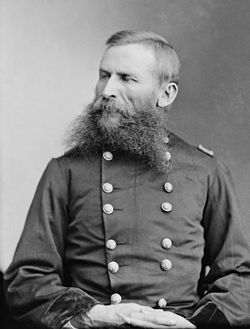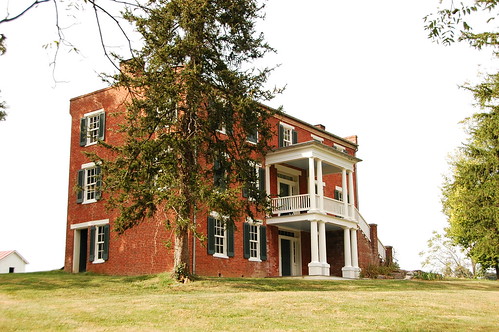 |
| George Crook |
On
July 24th, 150 years ago, Early moved north towards the
Federal Army of the Valley, under the command of George Crook, a West
Point Graduate and an Indian fighter. The two forces met at
Kernstown, the sight of Stonewall Jackson's first independent battle
back in 1862. As the Confederates arrived on the battlefield, Early
sent in his cavalry first, deploying the infantry under the cover of
woods. This confirmed Crook's belief that the main Confederate army
had left the valley, and he ordered his troops to attack what he
assumed to be a small party.
 |
| Pritchard House, around which the battle was fought |
At
1 PM Mulligan's division advanced, supported by the brigade of
Rutherford B. Hayes, future president of the United States. As Hayes
command marched down a road towards the Confederate position, they
were surprised by a sudden attack on their flank. Rebels came
streaming out of a ravine, catching Hayes' men off guard and throwing
them into retreat. A gap had opened up on Mulligan's other flank,
which John B. Gordon's division exploited. With Mulligan caught
between two Confederate commands, he ordered his division to retreat.
He himself fell as he fruitlessly tried to stop the retreat from
turning into a rout. The Federal cavalry attempted to stop the
Confederate column, but the southern troopers halted and broke them,
adding to the Federal confusion. Soon the entire Union army was
scattered and retreating before Early's victorious men.
 |
| Rutherford B. Hayes |
Crook
retreated quickly with his battered army, crossing the Potomac into
Maryland on July 26th. With the Federals again cleared
from the Valley, Early took the opportunity again raid the north,
sending cavalry into Federal territory which burned Chambersburg,
Pennsylvania.


0 comments:
Post a Comment